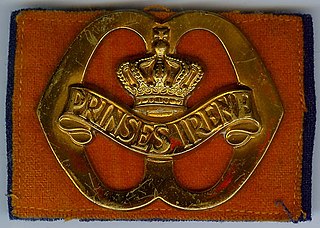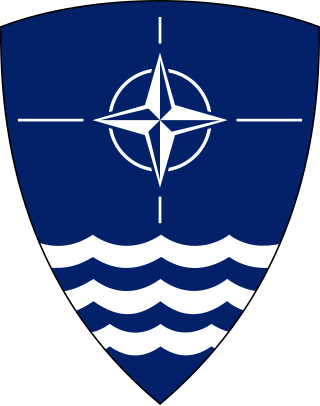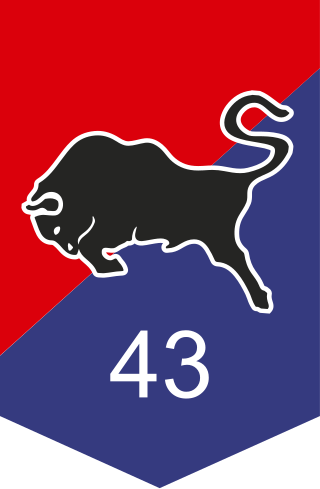
The Royal Netherlands Army is the land branch of the Netherlands Armed Forces. Though the Royal Netherlands Army was raised on 9 January 1814, its origins date back to 1572, when the Staatse Leger was raised making the Dutch standing army one of the oldest in the world. It fought in the Napoleonic Wars, World War II, the Indonesian War of Independence, and the Korean War, and served with NATO on the Cold War frontiers in West Germany from the 1950s to the 1990s.

The Princess Irene Fusiliers Guards Regiment is a regiment of the Royal Netherlands Army, named after Princess Irene, the Granddaughter of Queen Wilhelmina, daughter of Queen Juliana, sister of Princess Beatrix and aunt of King Willem-Alexander. It is one of two regiments, along with the Garderegiment Grenadiers en Jagers, to be classed as 'Guards'.

The Regiment Huzaren van Boreel is an armoured regiment of the Royal Netherlands Army, named for Willem Francois Boreel. It currently serves in the armoured Intelligence, Surveillance, Target Acquisition, Reconnaissance (ISTAR) role; the regiment provides armoured reconnaissance squadrons assigned to the 43 Mechanised Brigade, 13 Light Brigade and 11 Airmobile Brigade. An STA artillery unit, an electronic warfare unit, Human Intelligence (HUMINT) unit and imagery intelligence unit are all formed into a single battalion attached to the Combat Support Brigade.
The Regiment Huzaren Prins Alexander is an armoured regiment of the Royal Netherlands Army, named after Prince Alexander, the second son of King Willem II. This regiment represented the former 3rd Hussars Regiment, formed in 1814. It was known as the Red or Guards Hussars, but was never a Guards regiment.

The Regiment Huzaren Prins van Oranje was an armoured regiment of the Royal Netherlands Army, named after Prince Willem, Prince of Orange, eldest son of King Willem II. The regiment served as part of 43 Gemechaniseerde (Mechanized) Brigade operating the Leopard 2 main battle tank.

The Regiment Huzaren van Sytzama was a Dutch armored regiment named for J.G. Baron van Sytzama, which was disbanded in 2012. Its origins may be traced to the French 14th Regiment of Cuirassiers which had in turn been formed from the Dutch 2nd Regiment of Cuirassiers in 1810. From these men, the Baron raised the regiment, later styled 1e Regiment Huzaren.

The Land Component, historically and commonly still referred to as the Belgian Army, is the land branch of the Belgian Armed Forces. The King of the Belgians is the commander in chief. The current chief of staff of the Land Component is Major-General Pierre Gérard.

The AIFV is a US tracked light armored vehicle that serves as an infantry fighting vehicle (IFV) in the armies of several countries. It is a development of the M113A1 armored personnel carrier.

The YPR-765 is a Dutch infantry fighting vehicle that is based on the AIFV design that was developed by the FMC Corporation. It replaced the AMX-VCI and YP-408 of the Royal Netherlands Army and entered service in 1977. The Dutch YPR-765s were later replaced by the CV90, Fennek and Boxer.

The 11 Air Assault Brigade is the rapid light infantry brigade of the Royal Netherlands Army, focused on conducting air assault operations. Troops of the brigade are qualified to wear the maroon beret upon completion of the demanding training course, those qualified as military parachutists wear the appropriate parachutist wings. The brigade was handed the name '7 December' when the First Division 7 December was disbanded in 2004.

The Cavalry Brigade "Pozzuolo del Friuli" is a brigade of the Italian Army, based in the Friuli Venezia Giulia and Veneto regions. The Brigade consists of a command unit, a cavalry regiment, an amphibious infantry regiment, an artillery regiment, an engineer regiment and a logistic regiment.

Allied Forces Baltic Approaches (BALTAP) was a Principal Subordinate Command (PSC) of the NATO Military Command Structure, with responsibility for the Baltic Sea area. It was in existence from 1962 to 2002 and consisted of the Danish Armed Forces, units of the West German Bundeswehr and allied wartime reinforcements.

The 13th Light Brigade is one of the three combat brigades of the Royal Netherlands Army, the other ones being 11th Airmobile Brigade and 43rd Mechanised Brigade. The brigade is a fully motorised brigade, equipped with Fennek, Boxer and Bushmaster wheeled, armoured vehicles.

The 3rd Armoured Division was formed on 2 July 1956 in Hamburg and was one of the first major formations of the new German Army or Bundeswehr after the Second World War. The 3rd Armoured Division was stationed on the North German Plain between the rivers Elbe and Weser. Its last headquarters location was Buxtehude. It was part of the I Corps alongside the 1st Panzer, 7th Panzer, and 11th Panzergrenadier Divisions.

43 Mechanised Brigade is one of the three combat brigades of the Royal Netherlands Army, the others being the 13th Light Brigade and 11th Airmobile Brigade. The brigade has armored and non-armored vehicles at its disposal, and is tasked with conducting combat operations, peacekeeping and various ceremonial tasks.
The Northern Army Group (NORTHAG) was a NATO military formation comprising five Army Corps from five NATO member nations. During the Cold War NORTHAG was NATO's forward defence in the Northern half of the Federal Republic of Germany (FRG). The Southern half of the Federal Republic of Germany was to be defended by the four Army Corps of NATO's Central Army Group (CENTAG). During wartime NORTHAG would command four frontline corps and one reserve corps. Air support was provided by Second Allied Tactical Air Force.
The Central Army Group (CENTAG) was a NATO military formation comprising four Army Corps from two NATO member nations comprising troops from Canada, West Germany and the United States. During the Cold War, CENTAG was NATO's forward defence in the southern half of the Federal Republic of Germany (FRG). The northern half of the FRG was defended by the four Army Corps of NATO's Northern Army Group (NORTHAG). During wartime, CENTAG would command four frontline corps. Air support was provided by Fourth Allied Tactical Air Force.

The Jordanian Northern Command is the Jordanian Armed Forces regional command responsible for the defense of the northern front against possible attack by Syria or Israel.

The Jordanian Eastern Command is the Jordanian Armed Forces regional command responsible for the North - East front against Syria and Iraq.

The current structure of the Royal Netherlands Army is as follows:


















